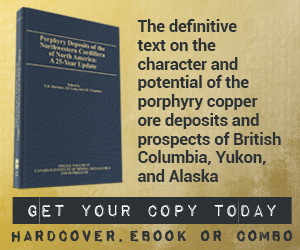Estimation of Mineral Resources & Mineral Reserves
These guidelines are intended to assist the Qualified Person(s) (QP) in the planning, supervision, preparation, and reporting of Mineral Resource and Mineral Reserve (MRMR) estimates.
The CIM Estimation of Mineral Resources and Mineral Reserves Best Practice Guidelines (MRMR Best Practice Guidelines) were prepared by the Canadian Institute of Mining, Metallurgy and Petroleum's (CIM) Mineral Resources and Mineral Reserves Committee (CIM MRMR Committee) to update an earlier version that was accepted by CIM Council on November 23, 2003 (CIM, 2003). These 2019 MRMR Best Practice Guidelines supersede and replace the November 23, 2003 version of the MRMR Guidelines.
Version française bientôt disponible
Published by: CIM Mineral Resource & Mineral Reserve Committee
Published on: November 29, 2019
Best practice guidelines specific to coal estimation
Published by: CIM Estimation Best Practice Committee
Published on: November 23, 2003
The Leading Practice Guidelines for documenting Diamond Exploration Results, Resources and Reserves, specific to Primary Diamond Deposits (Diamond Guidelines) supersede and replace in one document, the Guidelines for the Reporting of Diamond Exploration Results (2003) and the CIM Best Practice Guidelines for the Estimation of Mineral Resources and Mineral Reserves for Rock Hosted Diamonds (2008). Diamonds are produced commercially from primary and secondary diamond deposits. “Primary diamond deposits" as discussed in these guidelines refer to the diamond-bearing rocks kimberlite and olivine lamproite. They can include sedimentary units created during emplacement. Secondary diamond deposits consist mainly of alluvial and marine deposits. Secondary diamond deposits can include consolidated sediments.
Published by: CIM Mineral Resource & Mineral Reserve Committee
Published on: November 08, 2025
Estimation of Mineral Resources and Mineral Reserves for industrial minerals requires special care. The estimation of an industrial minerals deposit is affected to a significant degree by a number of factors that are less applicable to metallic mineral deposits, including: particular physical and chemical characteristics; mineral quality issues; market size; the level of the producer’s technical applications knowledge; market concentration; and transportation costs.
Published by: CIM Mineral Resource & Mineral Reserve Committee
Published on: November 19, 2023
For archival purposes, the 2003 edition of the previous Industrial Minerals Best Practice Guidelines is listed under the 2023 edition.
Published by: CIM Estimation Best Practice Committee
Published on: November 23, 2003
Lateritic deposits are a group of residual deposits that typically develop as soils in areas with warm, wet climates. These are mainly surficial deposits, though some have been buried and are mined via underground methods.
Published by: CIM Estimation Best Practice Committee
These guidelines were prepared by the Sub-Committee on Best Practice Guidelines for Resource and Reserve Estimation for Lithium Brines. The procedures and concepts presented below represent the state of the current understanding of the best practices that are applicable to the estimation of brine resources and brine reserves for lithium and other valuable metal ions in brine deposits. It is acknowledged that these practices are likely to evolve and improve with time as additional experience is gained from this deposit type. It is anticipated that these improvements will be the subject of and included in subsequent revisions of these Best Practices.
This document is currently under review.
Published by: CIM Estimation Best Practice Committee
Published on: November 01, 2012
Placer deposits include several different types of commodities and a range of geological environments. The three deposit types discussed here are considered to have specific technical issues that require specialized knowledge. They are: 1- Mineral sands 2- Placer gold 3- Alluvial diamonds
Published by: CIM Estimation Best Practice Committee
Estimation guidelines for potash deposits
Published by: CIM Estimation Best Practice Committee
Published on: November 23, 2003
Please note that these guidelines have been superseded and replaced by the 2025 Leading Practice Guidelines for documenting Diamond Exploration Results, Resources and Reserves, specific to Primary Diamond Deposits (Diamond Guidelines).
Published by: CIM Estimation Best Practice Committee
Published on: March 01, 2008
Uranium deposits occur in a broad range of geological environments. It can also be recovered as a by-product in other types of mineral deposits. Almost all the world’s production is used to produce nuclear fuel for nuclear power reactors, but the metal also has military and other civilian sector applications. While the MRMR BP Guidelines (as amended) provide guidance in relation to the preparation of MRMR estimates for metalliferous and other deposits, additional guidance is provided within this document due to the radioactive properties of uranium and its potential amenability to the ISR mining method.
Published by: CIM Mineral Resource & Mineral Reserve Committee
Published on: November 22, 2024
The General Guidelines for other metals, outlined in the Best Practice Guidelines, are also applicable to uranium deposits. However, because of the radioactive nature of uranium, and in some cases the amenability of this metal to In Situ Leach (ISL) mining methods, additional guidelines are appropriate.
Published by: CIM Estimation Best Practice Committee
Published on: November 23, 2003

.png)
